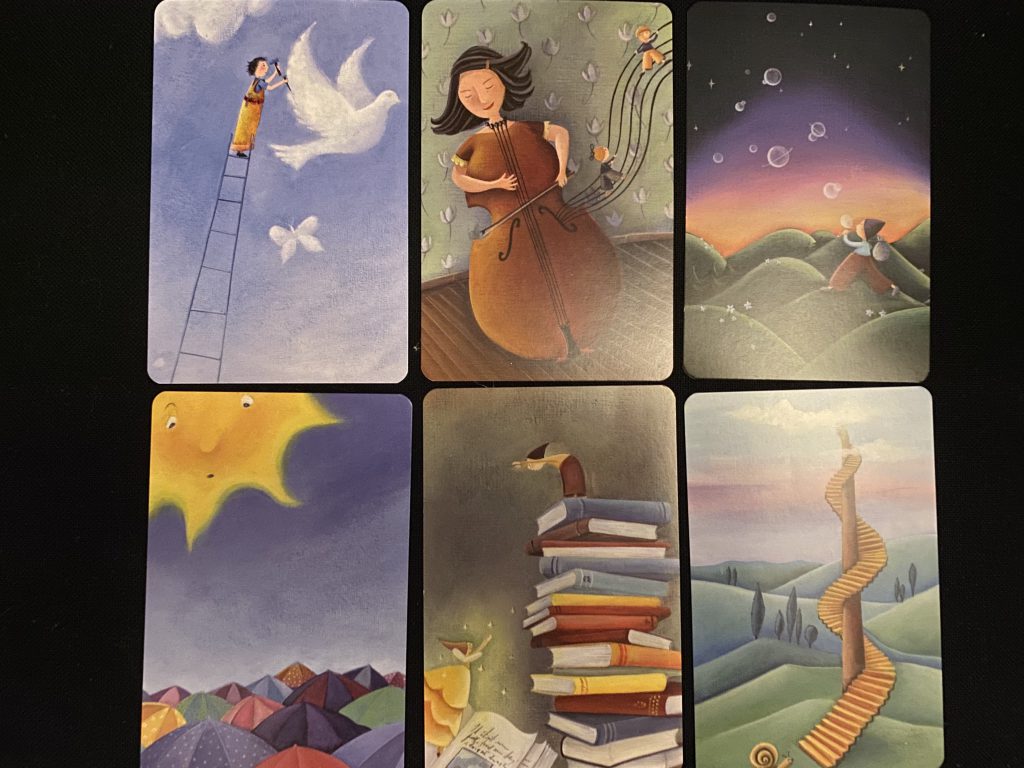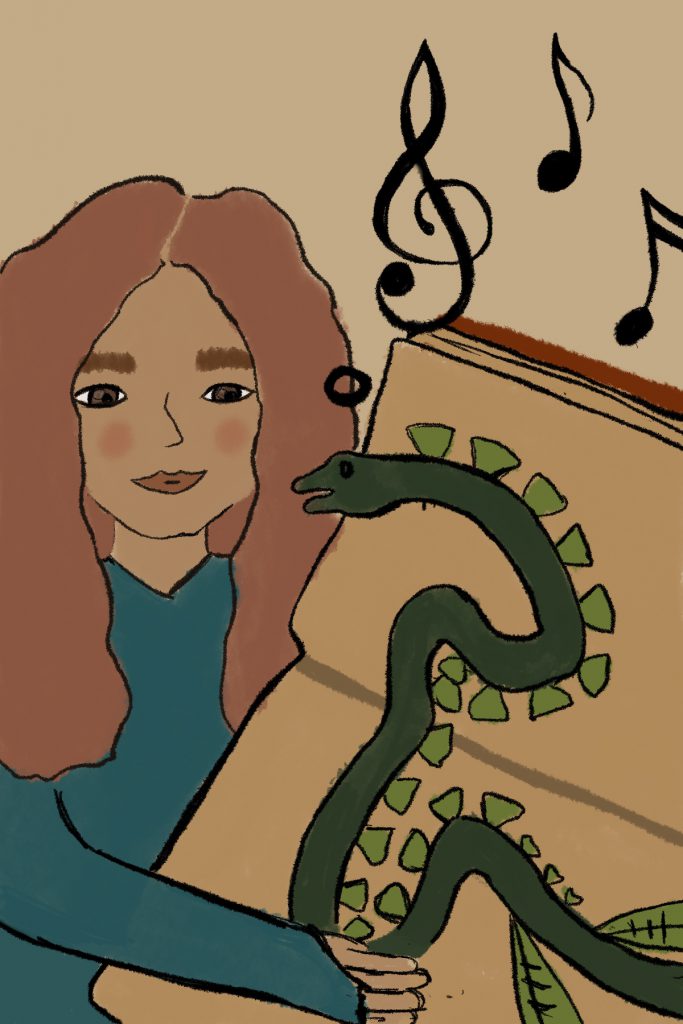“Now we have explored a variety of techniques for helping to foster creativity and generate new ideas, let’s experiment with some of these ideation techniques. Begin this activity by selecting one or more of the ideation techniques discussed this week, then apply them to the following challenge:1. Choose an existing artefact that is the output of someone’s creativity. This could be a poem, short story, illustration, song or anything else you think is interesting. 2. Modify the artefact in some way using the techniques you selected. The aim is to remediate it into another form of the artefact. The term ‘remediation’ is used here in the same way that Grusin and Bolter intended in their book, Remediation: Understanding New Media (2000). The term denotes a framework for “considering how all media constantly borrow from and refashion other media”, and this is exactly what we want you to do in this task.As with all attempts to channel inner creativity, there are no rules for this exercise. Instead, you are encouraged to dive straight in and not think too hard about it. Select your initial artefact, blast through the ideation techniques to find ways to modify it and let the output happen organically. You might devise something that could be deemed a ‘success’ or it might be nonsensical and random (in our eyes this is equally a success). The point is not to aim for perfection and instead generate many ideas that could be improved upon if they show potential” (Falmouth University 2020).
In week two we explore a variety of techniques like collage, brainstorming and crazy eight’s to foster creativity and generate ideas. Famous musician, David Bowie explains his own ideation methods in the BBC documentary How David Bowie used ‘cut ups’ to create lyrics. He saves time by using a computer program to speed up the “cut-ups” process to inspire his lyrics (Bowie 2016). Bowie discusses how his creative process has changed over the years, he used to use another ideation method – painting before moving on to ‘cut-ups’ and collage techniques (Bowie 1998).
We were tasked with choosing an artefact to explore two further creative techniques in more detail. I chose Marie Cardouat’s illustrations, which are surreal cards designed for one of my favourite board game’s Dixit. I picked two creativity techniques I had not used before, SCAMPER and Opposite Thinking.
Marie Cardouat, Dixit (2008)
Remediation is a term used by Grusin and Bolter in their book Remediation: Understanding New Media (2000). The term denotes a framework for “considering how all media constantly borrow from and refashion other media” (Falmouth University 2020). So I am borrowing Marie Cardouat’s style and aesthetic, refashioning her imagination and creativity but importantly I am not copying her work.

Marie Cardouat is an illustrator I admire who clearly has a vivid imagination and oodles of creativity.
Dixit is a board game designed to foster creativity and (I would suggest) harmony; a collaborative rather than competitive experience. I attend events at a board game club, and Dixit was actually a gift from a member. Over the years I have used her cards for a variety of tasks (not just as a board game). I brought photocopies of the card for an exercise in creative writing to a school class.
Technique 4: Opposite Thinking
“Opposite thinking is a playful problem-solving technique that allows you to quickly challenge assumptions and see things from a different angle. You begin the process by listing a few assumptions you have about a situation. Once you have the core assumptions laid out on paper, you are challenged to define an opposite reality for each one. You can repeat this process a number of times, using the new reality assumptions to feed forward into the next iteration” (Falmouth University 2020).
Oppostie Thinking steps
- Describe your assumptions
- Write down the opposite of your assumption
- Use a scenario to describe a new or improved solution that challenges your assumption.
My answers:
- Create a fantasy-like illustration on a card
- Delete a realistic and gritty illustration on thin air
- Add a magic realism element to a fantastical scene
- Add a realistic person in a fantasy landscape
- Add a fantasy-like person into a realistic landscape
- Add a realistic-looking object into a fantasy scene
- Add a realistic card with fantasy elements
Opposite thinking reflection: “As with all attempts to channel inner creativity, there are no rules for this exercise. Instead, you are encouraged to dive straight in and not think too hard about it” (Falmouth University 2020). I’m not sure I used Opposite thinking correctly and to “delete a realist and gritty illustration on thin air” might be a challenge. The exercise did get me thinking though and might be worth another try at a later stage.
Technique 8: SCAMPER
SCAMPER steps:
SCAMPER is an acronym for substitute, combine, adapt, modify, put to other uses, eliminate and rearrange.
My answers:
| Substitute | Instead of a cello, place a fish |
| Combine | A woman walks in a field of books |
| Adapt | The fish plays the woman, while she walks through the field of books |
| Modify | A very large fish swims through a sea of books, whilst playing the cello |
| Put to other uses | A very large fish sings the books talk, the cello listens |
| Eliminate | Remove the cello |
| Rearrange | The very large fish is inside of a book, being read by a woman |
A fast sketch (procreate) of The very large fish is inside of a book, being read by a woman

Fig 2. MASTERS 2020 The very large fish is inside of a book, being read by a woman 
Fig 3. Marie Cardouat 2008. Dixit [illustrated cards]
Reflection
Great work Sarah,
I love the illustrations of Dixit and how themselves are intended to foster creativity.
I think you nailed the feel of those kind of illustrations. (Rubino replying to Author on Week 3 Challenge Activity 2020)
Love the illustration and how the colour palette is in keeping with the source material. Impressed by your SCAMPER approach as well – completely individual and it produced something unique but connected to the source. (Griffiths replying to author on Week 3 Challenge Activity 2020)
Love the use of the Dixit cards as a point of inspiration, and I really like how the final product is so different from the source and yet at the same time you can clearly see the original influences. (Handley replying to author on Week 3 Challenge Activity 2020)
Reflection
What is the difference between imagination and creativity, and what relationship do they have? Imagination and creativity “work hand in hand” (Doust 2019). It is “through the creative process we are bringing imagination into reality” (Doust 2019), as an artist, writer and general creative person I have informally been bringing my imagination to fruition. Generally, one of my favourite methods of ideation is mind mapping/brainstorming (perhaps second to sketching).
“Mind mapping utilizes the concept of “radiant thinking.” This means thoughts radiate (branch out) in different directions from a single idea. The branches may move forwards and backwards to and from the main (central) idea” (Luenendonk 2019).
“Mind maps help the user utilize the complete power of the brain, both the left which is more associated with logical and analytical thinking, and the right which is utilized for day dreaming, spatial awareness, color, imagination and a feeling of wholeness” (Luenendonk 2019).
I found SCAMPER to be a much more effective method of bringing out my creativity. A member of the cohort (and programmer) built a SCAMPER tool (Uys 2020) which randomises each step of the process. In my creative process for the challenge activity, I walked through each step of the SCAMPER tool. So I started with Substitute, then Combine and so on. SCAMPER is designed to be randomised, and yet as it’s a creative process, I would suggest there should be no hard and fast rules. Next time, I will try the suggested method and Juan Uys’ SCAMPER tool.
List of figures
Figure 1. Marie CARDOUAT. 2008. Dixit [illustrated cards].
Figure 2. Sarah MASTERS. 2020. The very large fish is inside of a book, being read by a woman.
Figure 3. Marie CARDOUAT. 2008. Dixit [illustrated cards].
References
BBC News. 2016. How David Bowie used ‘cut ups’ to create lyrics – BBC News [online video]. Available at: https://www.youtube.com/watch?v=6nlW4EbxTD8 [accessed 27 October 2020].
Board of Innovation. Available at: https://www.boardofinnovation.com/tools/opposite-thinking/ [accessed 27 October 2020].
DAM, Rikke and Teo SIANG. 2020. ‘Learn How to Use the Best Ideation Methods: SCAMPER’ [online], Interaction Design Foundation. Available at: https://www.interaction-design.org/literature/article/learn-how-to-use-the-best-ideation-methods-scamper [accessed 27 October 2020]
Dixit, 2008, Marie Cardouat, Libellud.
DOUST, Tom. 2019. ‘Imagination = Creativity’, [online], Imagination Matters. Available at: https://www.imaginationmatters.org/index.php/2019/09/20/imagination-creativity/ [accessed 27 October 2020]
Falmouth University. 2020. ‘Week 2: Challenge Activity’. Falmouth Flex [online]. Available at: https://flex.falmouth.ac.uk/courses/872/pages/week-2-introduction?module_item_id=44795 [accessed 27 October 2020].
GRIFFITHS, Paul. 2020. ‘Week 2: Challenge Activity’. Falmouth University Discussion Board [online] September 29. Available at: https://flex.falmouth.ac.uk/courses/872/discussion_topics/17756 [Accessed 3 October 2020].
GRUSIN Richard and Jay David BOLTER. 2000. Remediation: Understanding New Media, London: The MIT Press.
HANDLEY, Elliot. 2020. ‘Week 2: Challenge Activity’. Falmouth University Discussion Board [online] October 1. Available at: https://flex.falmouth.ac.uk/courses/872/discussion_topics/17756 [Accessed 3 October 2020)
HARYANTO, B. 2019. ‘How to do crazy 8’s remotely’ [online], Medium, 8 January. Available at: https://uxdesign.cc/how-to-do-crazy-8s-remotely-223d7fbd5e98[accessed 27 October 2020].
LUENENDONK, M. 2019. ‘Techniques for Idea Generation: Mind Maps’ [online], Cleverism, 20 September. Available at: https://www.cleverism.com/techniques-idea-generation-mind-maps/ [accessed 27 October 2020].
ROSE Charlie. 1998. David Bowie: to be an artist is to be “dysfunctional” – Charlie Rose [online video] https://www.youtube.com/watch?v=t8CNhakfB7c [accessed 27 October 2020]
RUBINO, Giovanni. 2020. ‘Week 2: Challenge Activity’. Falmouth University Discussion Board [online] September 29. Available at: https://flex.falmouth.ac.uk/courses/872/discussion_topics/17756 [accessed 3 October 2020].
UYS, Juan. 2020. Random SCAMPER [online]. Available at: https://juanuys.com/scamper/ [accessed 27 October 2020].